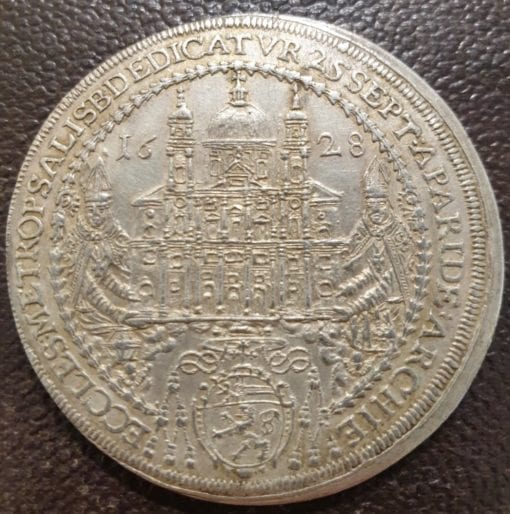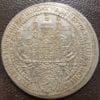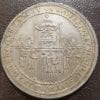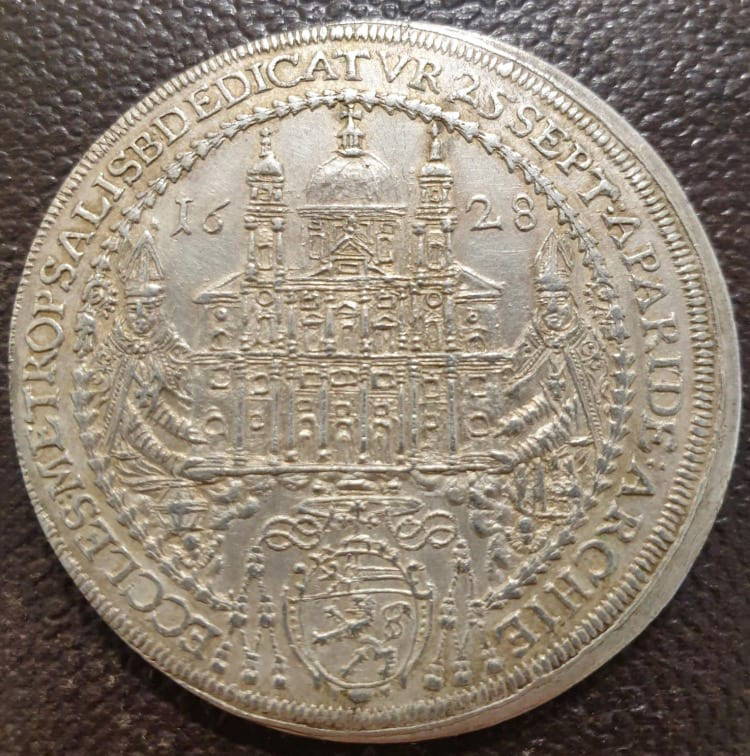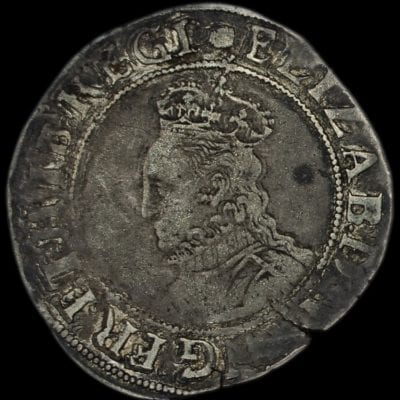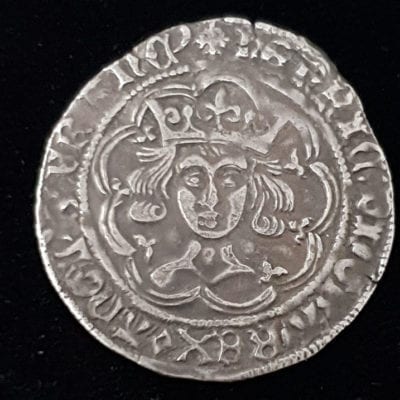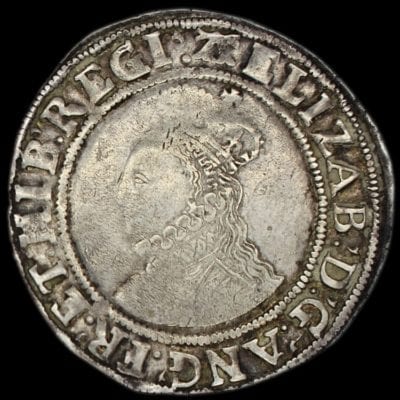Description
SOLD
Cathedral, dividing dates, (16-28) held by, Saint Rupert, Saint Virgil, Arms of Count Paris of Lodron, below.
Reverse,Palaquin, with reilics of Saitn Rupert,Saint Virgil, carried by eight bishops, with two winged angels below.
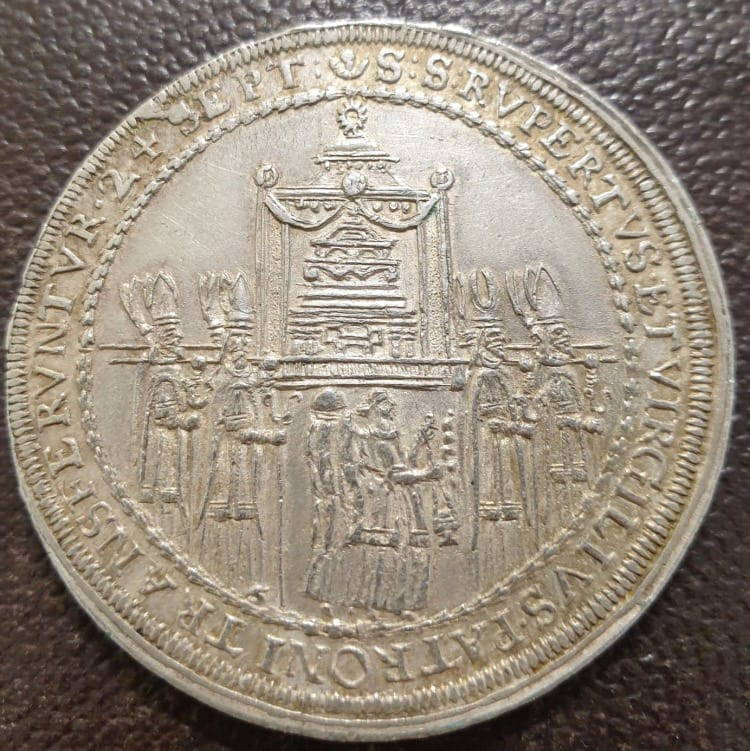
Thaler Habsburg Empire Cathedral dividing dates (16-28) held by Saint Rupert and Saint Virgil. Arms of Count Paris of Lodron below
The first cathedral of Salzburg was built under Saint Vergilius, who might have used foundations by St. Rupert. The first Dom was recorded in 774. This original church thus experienced at least three extensive building and rebuilding campaigns during the early Middle Ages, the final result of which was a somewhat ad hoc Romanesque basilica. In 1598, the basilica was severely damaged, and after several failed attempts at restoration and reconstruction, the building was finally ordered to be demolished by Prince-Archbishop Wolf Dietrich (Archbishop from 1587-1612). The Salzburg Cathedral, which is still present today was designed by Santino Solari, and was completed in less than 15 years, being finished by 1628. Additionally, the cathedral is built partially upon the foundations of the old basilica. Indeed, the foundation stones of the preceding church building may be seen in the Domgrabungen, an excavation site under the cathedral that also features mosaics and other artifacts found here when this location was the forum of the Roman city Juvavum. One other surviving relic that predates the baroque edifice is the 14th Century Gothic baptismal font. The relics of Saint Rupert were transferred here when the cathedral was completed.
The Archbishopric of Salzburg was an ecclesiastical state of the Holy Roman Empire, roughly consisting of the present-day state of Salzburg (the ancient Roman city of Iuvavum) in Austria.
Since 1648, the Archbishop of Salzburg has also borne the title Primas Germaniae ("First [Bishop] of Germania"). The powers of this title – now non-jurisdictional – are limited to being the Pope’s first correspondent in the German-speaking world, but used to include the right to summon the Prince-electors. The Archbishop also has the title of legatus natus ("permanent legate") to the Pope, which, although not a cardinal, gives the Archbishop the privilege of wearing a cardinal’s scarlet vesture, even in Rome.
In the Holy Roman Empire, the Thaler was used as the standard against which the various states’ currencies could be valued.
The Italian-Tyrolean Count Paris von Lodron (1619 to 1653) managed, thanks to his diplomatic talents, to keep Salzburg Land largely intact throughout the Thirty-Years War. The new university of Salzburg was also inaugurated in this period, and named after him.

